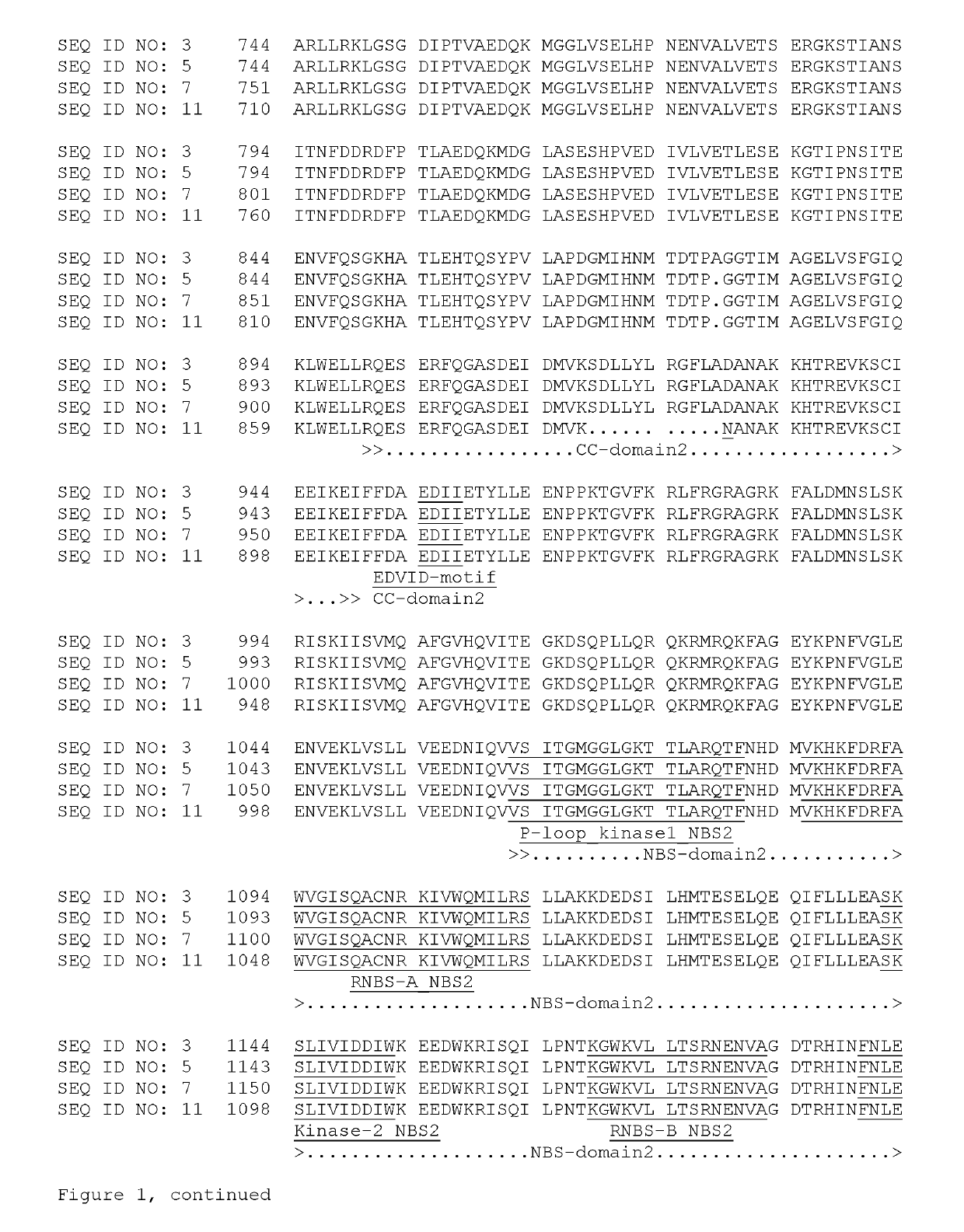Brassicaceae plants resistant to plasmodiophora brassicae (clubroot)
- Summary
- Abstract
- Description
- Claims
- Application Information
AI Technical Summary
Benefits of technology
Problems solved by technology
Method used
Image
Examples
example 1
Rough Mapping of Clubroot Resistance by GGGT Analysis
Generation of Mapping Population
[0306]A DH population was made by microspore regeneration from the F1 cross between a resistant female parent and a susceptible male parent. The population consisted of 106 DH individuals.
Golden Gate Genotyping (iSCAN 1536-GGGT) Analysis
DNA Extraction.
[0307]DNA was extracted from 106 DH plants and the 2 corresponding parents (resistant female parent and susceptible male parent) using the automated KingFisher DNA extraction method (Thermo Scientific) using the manufacturer's purification kits and protocol.
GGGT Analysis.
[0308]A custom Illumina GoldenGate BeadArray was designed by evaluating individual loci with the Illumina Assay Design Tool (ADT) and selecting most successful custom genotyping assays (score>0.6 (Hyten et al., 2008, Theor Appl Genet 116:945)). A custom 1536 single nucleotide polymorphism (SNP) Oligonucleotide Pool Assay was selected.
[0309]Assays were performed as described by the manu...
example 2
Fine Mapping of Clubroot Resistance Using SNP Marker Analysis
[0317]An F2 population of 1000 individuals originating from the F1 cross between the resistant female parent and the susceptible male parent was obtained. 1000 F2 plants were genotyped together with the parents using 96 KASP markers located at the bottom of NO2 using the Fluidigm platform. 74 markers were mapped. Two markers defining the border were identified (markers mBRS00013411 and mBRS00013511; see Table 2). 6 markers between the border gave no call in the susceptible parent, whereas they gave a call in the resistant parent (markers mBRS00013440, mBRS00154152, mBRS00013441, mBRS00013442, mBRS00161831, and mBRS00174679; see Table 2), indicating the absence of a region between the flanking markers in the susceptible parent. After finemapping the plotted region of interest (present in the resistant parent but absent in the susceptible parent) comprising the CRL gene has been defined as a 563 kb region.
TABLE 2Markers link...
example 3
Identification of Clubroot Resistance Genes
[0318]Identification of Syntenic Region in B. napus
[0319]The DNA sequence of the part of the pseudochromosome between the closest flanking markers of a B. rapa line, was blasted against the genome sequence scaffolds of the resistant female parent. The genome sequence between the flanking markers of the resistant female parent is shown in SEQ ID NO: 1. SEQ ID NO: 1 contains two putative genes with a CC-NBS-LRR domain or disease resistance classification (CRL1 and CRL2, respectively), wherein four different splice variants exist for CRL1 (CRL1a, CRL1b, CRL1c, and CRL1d respectively). The cDNA sequences of the CRL1a, CRL1b, CRL1c, CRL1d ,and CRL2 genes are shown in SEQ ID NO: 2, SEQ ID NO: 4, SEQ ID NO: 6, SEQ ID NO: 10, and SEQ ID NO: 8, respectively. The coding sequences of CRL1a, CRL1b, CRL1c, CRL1d , and CRL2 are at nt 52-5343 of SEQ ID NO: 2, nt 52-5340 of SEQ ID NO: 4, nt 52-5361 of SEQ ID NO: 6, nt 1-5259 of SEQ ID NO: 10, and nt 220-2...
PUM
| Property | Measurement | Unit |
|---|---|---|
| Fraction | aaaaa | aaaaa |
| Electrical resistance | aaaaa | aaaaa |
Abstract
Description
Claims
Application Information
 Login to View More
Login to View More - R&D
- Intellectual Property
- Life Sciences
- Materials
- Tech Scout
- Unparalleled Data Quality
- Higher Quality Content
- 60% Fewer Hallucinations
Browse by: Latest US Patents, China's latest patents, Technical Efficacy Thesaurus, Application Domain, Technology Topic, Popular Technical Reports.
© 2025 PatSnap. All rights reserved.Legal|Privacy policy|Modern Slavery Act Transparency Statement|Sitemap|About US| Contact US: help@patsnap.com



